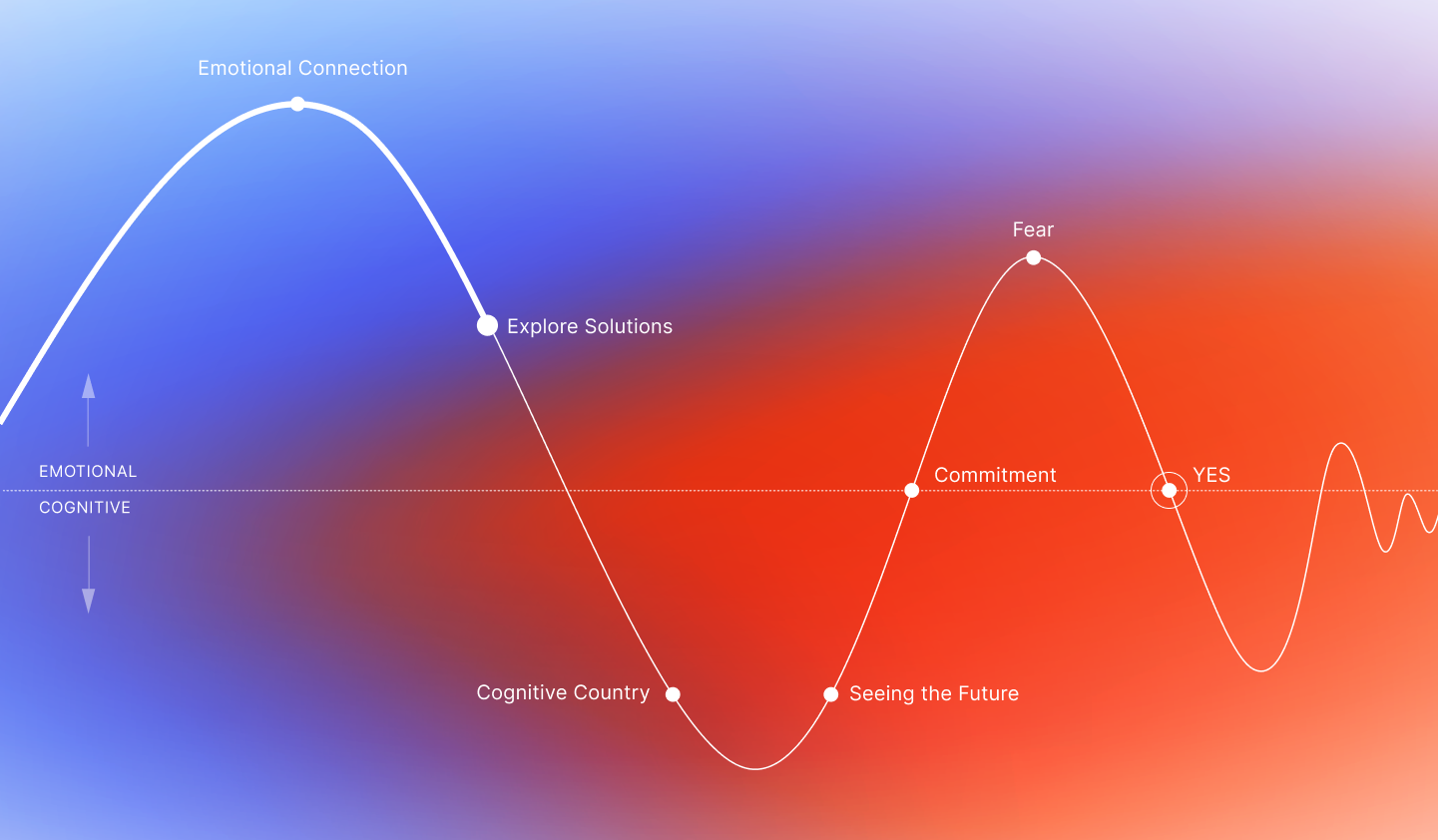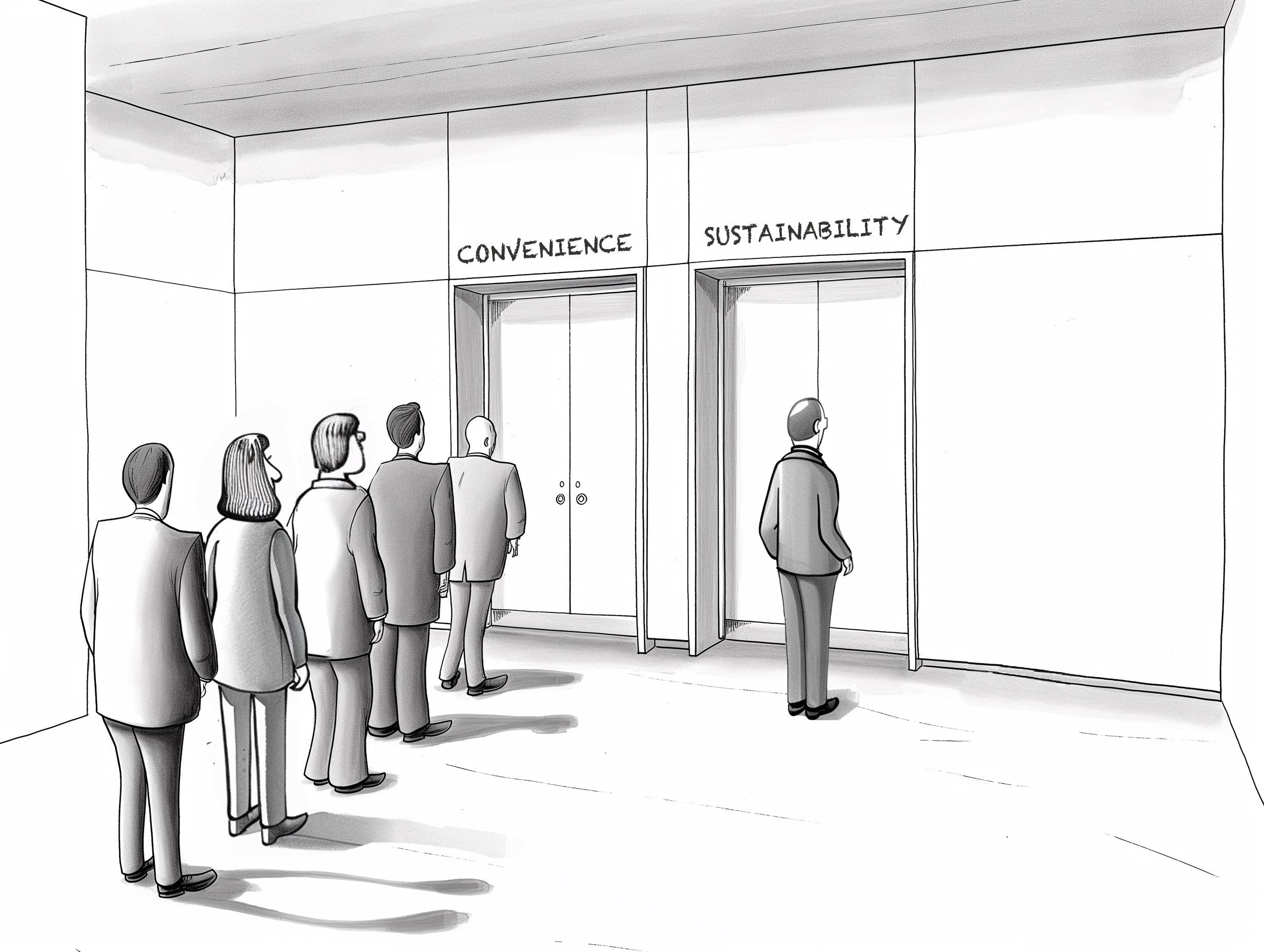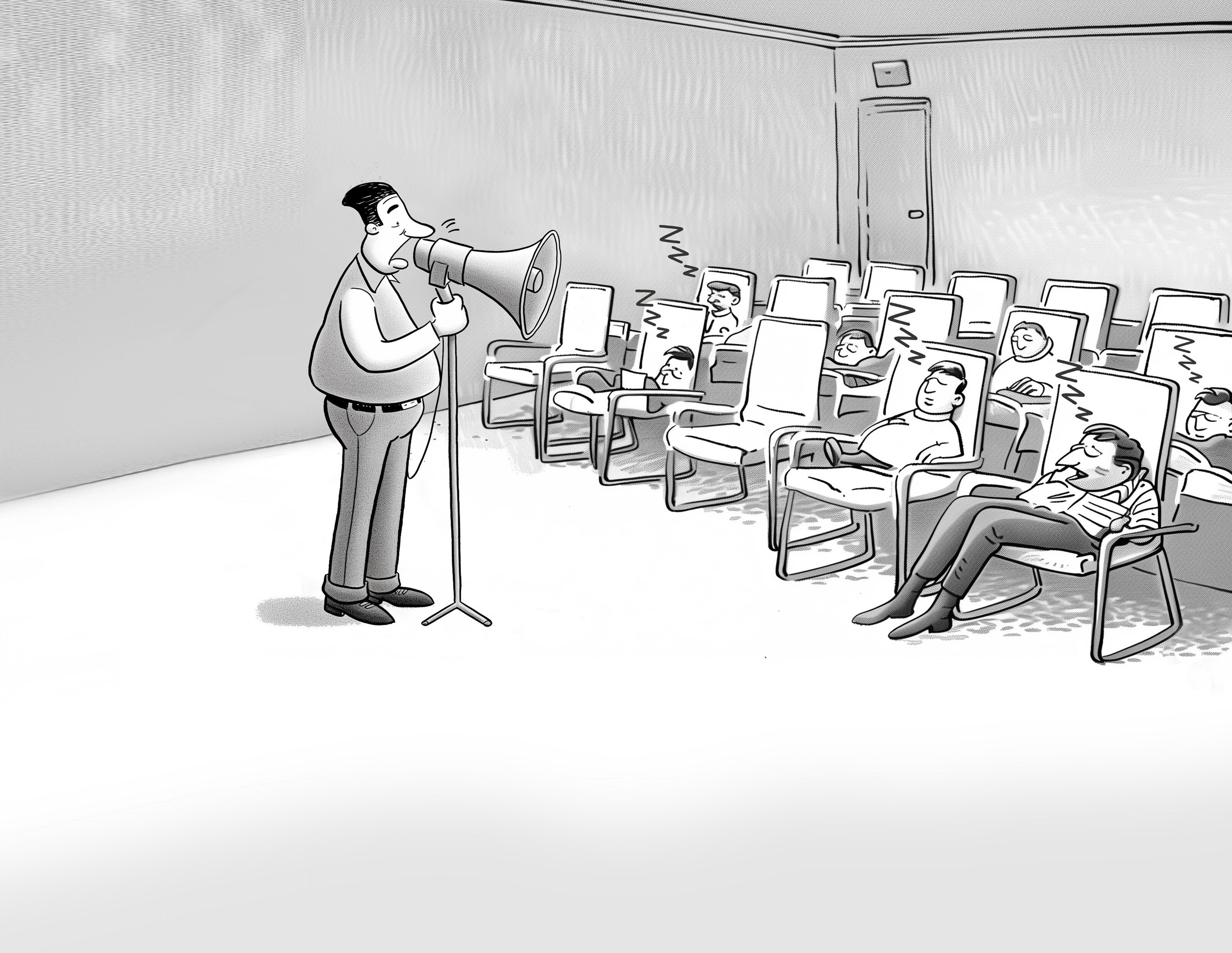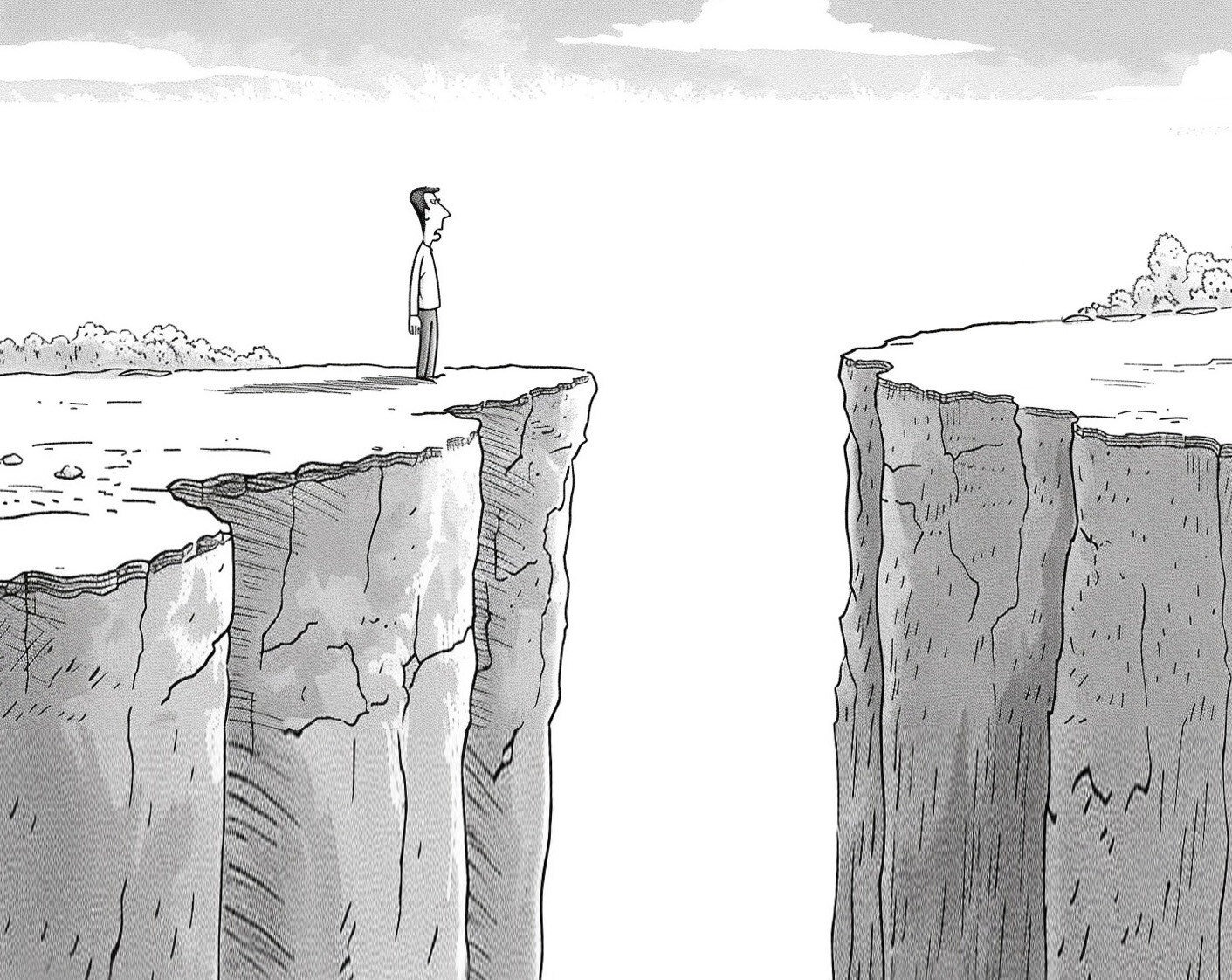Creating behavior change and getting to a decision is as much about the human as it is about the product or service. And every person who decides to do (or buy!) something goes through the same psychological journey - whether they're choosing a doctor, purchasing enterprise software, or buying a pack of gum.
White Rhino
Recent Posts
It’s a fundamental human behavior.
People say one thing and do another.
In sustainability, it’s a top point of discussion. 65% of consumers say they want buy from brands that support sustainability, but only 26% actually do. So, what gives?
READ MORE
When it comes to sharing innovative ideas, there are two ways the response could go.
On one side, there’s the lean forward. The audience collectively shifts their shoulders forward, their eyes widen, they reposition themselves – they get ready to engage. On the other side of the spectrum, is the eye roll. Listeners lean back and quickly begin to focus elsewhere, dismissing whatever they’re being told.
You’ve likely heard of the innovator’s dilemma, a term coined by Clayton Christensen. Established companies have a strong disincentive to innovate because it threatens the status quo of their growth. Less talked about, but possibly more prevalent because it affects any innovator regardless of company size, is the challenge that innovators face when sharing their new ideas. While most know the response they want from their audience, they don’t know how to get it. And the most discouraging part is that our ideas aren’t the problem. It’s how we communicate them.
We’ve seen it time and again in our focus industries (although it extends to any innovative area): Sustainability leaders losing their audience immediately because their future vision is not in touch with the current reality. Healthcare marketing executives told that their aspirations for digital patient experience are not a priority. Product teams within B2B organizations that can’t get enough funding for their B2C initiatives.
READ MORE
Congratulations on your truly remarkable innovation!
But here's the blunt truth: most new products, regardless of their brilliance, innovation, or potential to improve lives, ultimately fail. Innovators often clearly envision a world where their creation dominates the market, headlines and makes them rich along the way. However, this outcome is all too rare.
Consider MP3 players. Remember the MPman F10, the Rio, or the Creative Nomad Jukebox? Neither do I. But we all vividly recall the iPod – which came after many other similar products.
Why do many excellent products, services, or technologies falter while sometimes inferior ones succeed? It's because they attempt the impossible—they aim to capture everyone's attention. In doing so, they stumble into what Geoffrey Moore famously termed "the chasm"—a vast void between early adopters and the broader market. It's where promising ideas meet their demise.
You might argue, "But this new product is genuinely incredible!" However, two significant obstacles stand in your way. First, we're all bombarded with messages incessantly from all directions, forcing us to tune most of them out – making it nearly impossible to gain attention. Second, gaining acceptance for a new idea means challenging entrenched habits—a notoriously difficult feat.
READ MORE
Habits are so essential to our survival that their behavioral patterns are imprinted into our subconscious neural pathways. And anything that is counter to those habits is seen as a potential threat to our stability and safety.
But what happens when a brand needs their market to break free from these patterns?
READ MORE
When Google Glass launched to the public in 2014 after a $400 Million investment, it was heralded as the next big thing in wearable technology. But, less than a year later, the product was pulled from shelves. It’s a prime example of the unfortunate reality of innovation. Having a vision for a revolutionary product is not enough.
The launch campaign for Google Glass struggled to paint a clear picture of its place in consumers’ everyday lives.
“...though I tried, very hard, to make Glass a part of my life, I simply didn't feel comfortable with the screen hovering just out of my line of sight.” April 2014 Review in The Washington Post
Success and failure in innovation hinge on your ability to help others see themselves in the future you’ve envisioned. The iPod is a perfect case study. It wasn’t the first to market, but its success over other failed MP3 players can be attributed to Apple's ability to envision a new future of music consumption. Steve Jobs didn't just sell a device; he sold an experience, a new way of interacting with music that was so compelling that people wanted to be in this new world.
READ MORE
Today’s media is buzzing with pretty dramatic headlines declaring the end of cookies on the web. But here's the thing: it's not all doom and gloom for marketers. For marketers who have relied heavily on third-party cookies over the past several years, the shift to a cookie-less web can feel daunting. But our ability to personalize messages and offers is not going away. We just need to be more mindful and strategic about the way we collect and use data.
READ MORE
On June 16, 2022, healthcare marketers woke up under a microscope. A small line of code on their website was being called into question for sharing sensitive patient data back to Facebook without patients’ consent. And even those that were not using the pixel in question suddenly found themselves in deep conversations with their IT and compliance teams.
Listen as we discuss the matter with special guest Marc Needham from Combinaut – specializing in website content management tools tailored to the unique needs of hospital websites.
Nothing in this podcast should be taken as a recommendation or formal assessment. Please consult with your organization’s own legal and compliance team.
READ MORE
SUBSCRIBE
sign me up for news, inspiring creative, and other updates (privacy policy)
POST TOPICS
- Healthcare (50)
- Strategy (44)
- Best Practices (27)
- Technology (26)
- B2Me (24)
- Digital Marketing (24)
- Copywriting (20)
- Addictive Experience (14)
- B2B (13)
- Creative (10)
- Experts (9)
- Addictive Marketing Podcast (8)
- healthcare revenue generation (7)
- Behavior Change (6)
- Content Management System (5)
- Gamification (5)
- CMS (4)
- Lead Generation (4)
- Advertising (2)
- Branding (2)
- Journey Mapping (2)
- Lead Nurture (2)
- Market Research (2)
- Sustainability (2)
- AR (1)
- Augmented Reality (1)











